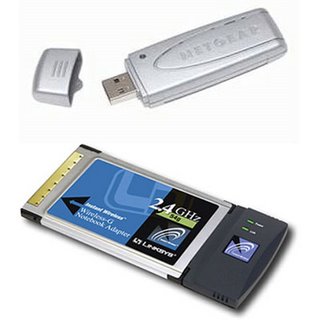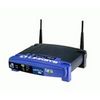If you've been in an airport, coffee shop, library or hotel recently, chances are you've been right in the middle of a wireless network. Many people also use wireless networking, also called WiFi or 802.11 networking, to connect their computers at home, and an increasing number of cities use the technology to provide free or low-cost Internet access to residents. In the near future, wireless networking may become so widespread that you can access the Internet just about anywhere at any time, without using wires. WiFi has a lot of advantages. Wireless networks are easy to set up and inexpensive. They're also unobtrusive - unless you're on the lookout for a place to use your laptop, you may not even notice when you're in a hotspot. In this article, we'll look at the technology that allows information to travel over the air. We'll also review what it takes to create a wireless network in your home.
- A computer's wireless adapter translates data into a radio signal and transmits it using an antenna.
- A wireless router receives the signal and decodes it. It sends the information to the Internet using a physical, wired Ethernet connection.
The radios used for WiFi communication are very similar to the radios used for walkie-talkies, cell phones and other devices. They can transmit and receive radio waves, and they can convert 1s and 0s into radio waves and convert the radio waves back into 1s and 0s. But WiFi radios have a few notable differences from other radios:
- They transmit at frequencies of 2.4 GHz or 5GHz. This frequency is considerably higher than the frequencies used for cell phones, walkie-talkies and televisions. The higher frequency allows the signal to carry more data.
- They use 802.11 networking standards, which come in several flavors:
- 802.11b was the first version to reach the marketplace. It's the slowest and least expensive standard, and it's becoming less common as faster standards become less expensive. 802.11b transmits in the 2.4 GHz frequency band of the radio spectrum. It can handle up to 11 megabits of data per second, and it uses complimentary code keying (CCK) coding.
- 802.11g also transmits at 2.4 GHz, but it's a lot faster than 802.11b - it can handle up to 54 megabits of data per second. 802.11g is faster because it uses orthogonal frequency-division multiplexing (OFDM), a more efficient coding technique.
- 802.11a transmits at 5GHz and can move up to 54 megabits of data per second. It also and uses OFDM coding. Newer standards, like 802.11n, can be even faster than 802.11g. However, the 802.11n standard isn't yet final.
- WiFi radios can transmit on any of three frequency bands. Or, they can "frequency hop" rapidly between the different bands. Frequency hopping helps reduce interference and lets multiple devices use the same wireless connection simultaneously.

 If you've been in an airport, coffee shop, library or hotel recently, chances are you've been right in the middle of a wireless network. Many people also use wireless networking, also called WiFi or 802.11 networking, to connect their computers at home, and an increasing number of cities use the technology to provide free or low-cost Internet access to residents. In the near future, wireless networking may become so widespread that you can access the Internet just about anywhere at any time, without using wires.
If you've been in an airport, coffee shop, library or hotel recently, chances are you've been right in the middle of a wireless network. Many people also use wireless networking, also called WiFi or 802.11 networking, to connect their computers at home, and an increasing number of cities use the technology to provide free or low-cost Internet access to residents. In the near future, wireless networking may become so widespread that you can access the Internet just about anywhere at any time, without using wires. 


0 Comments:
Post a Comment
Subscribe to Post Comments [Atom]
<< Home